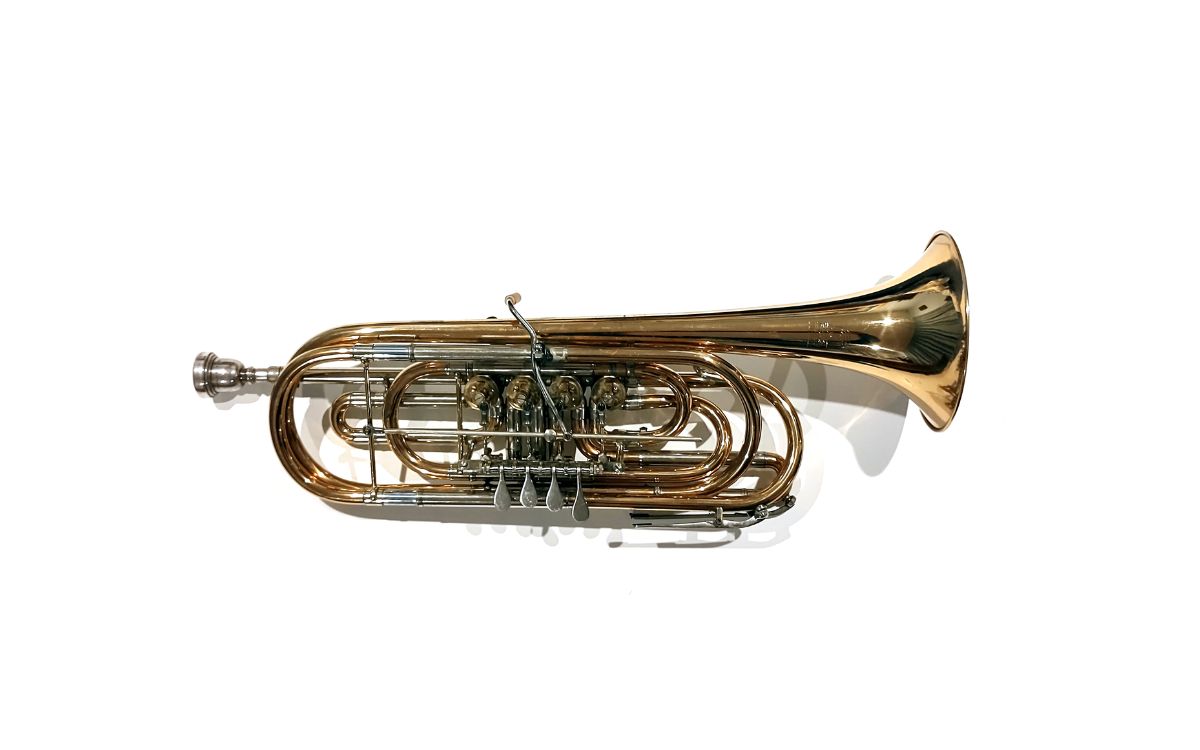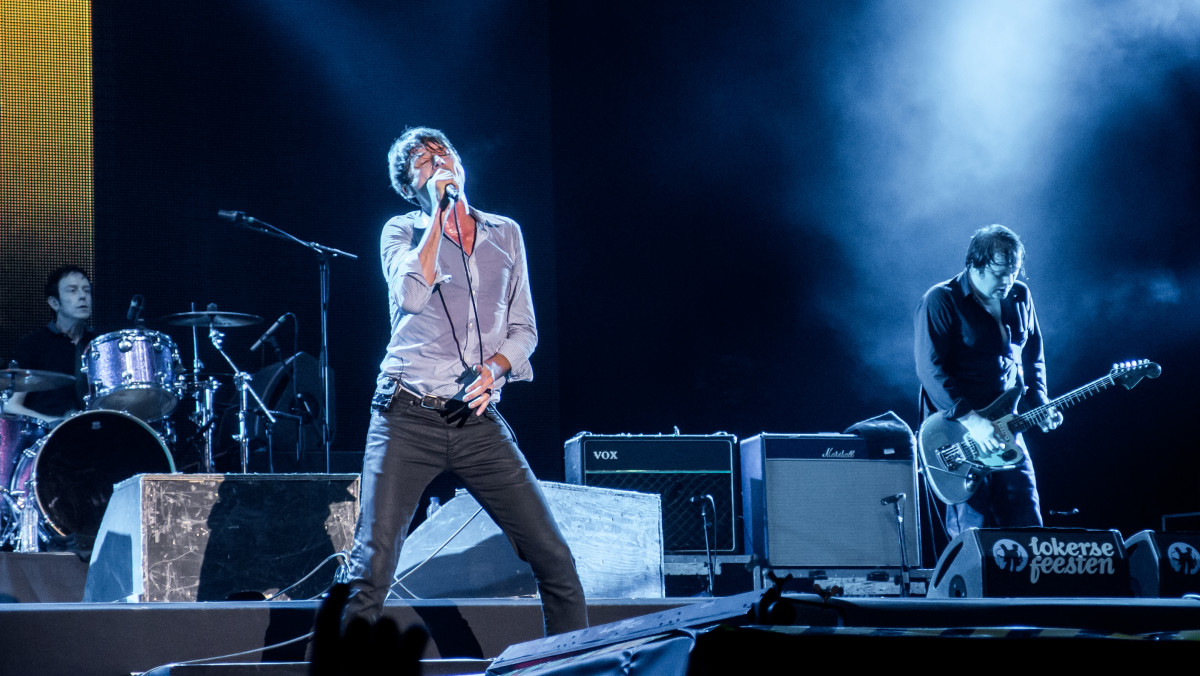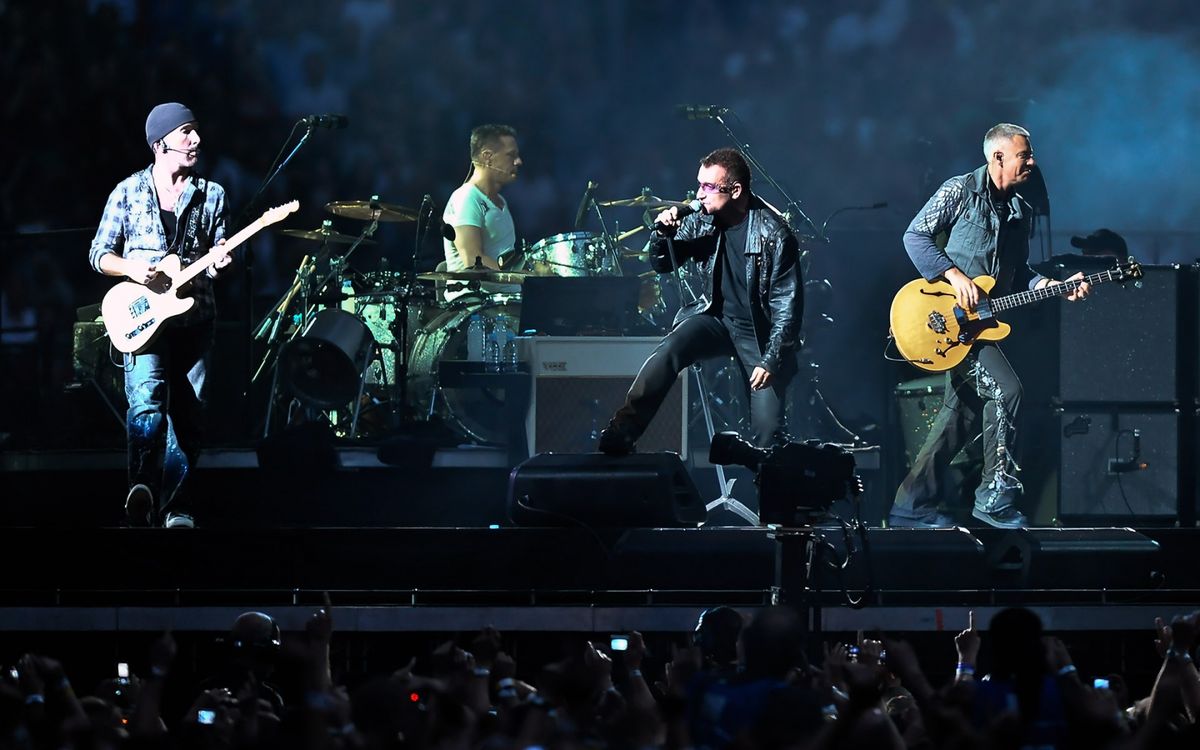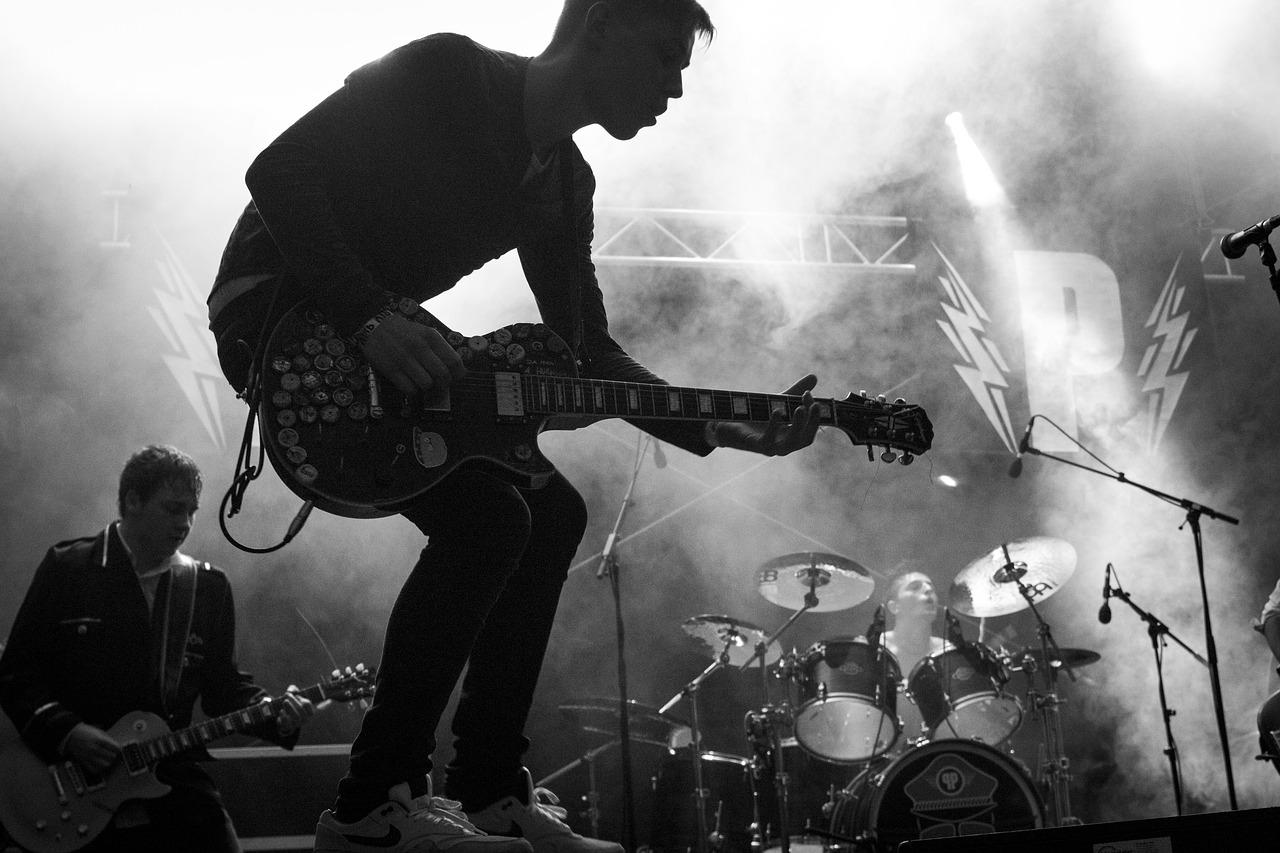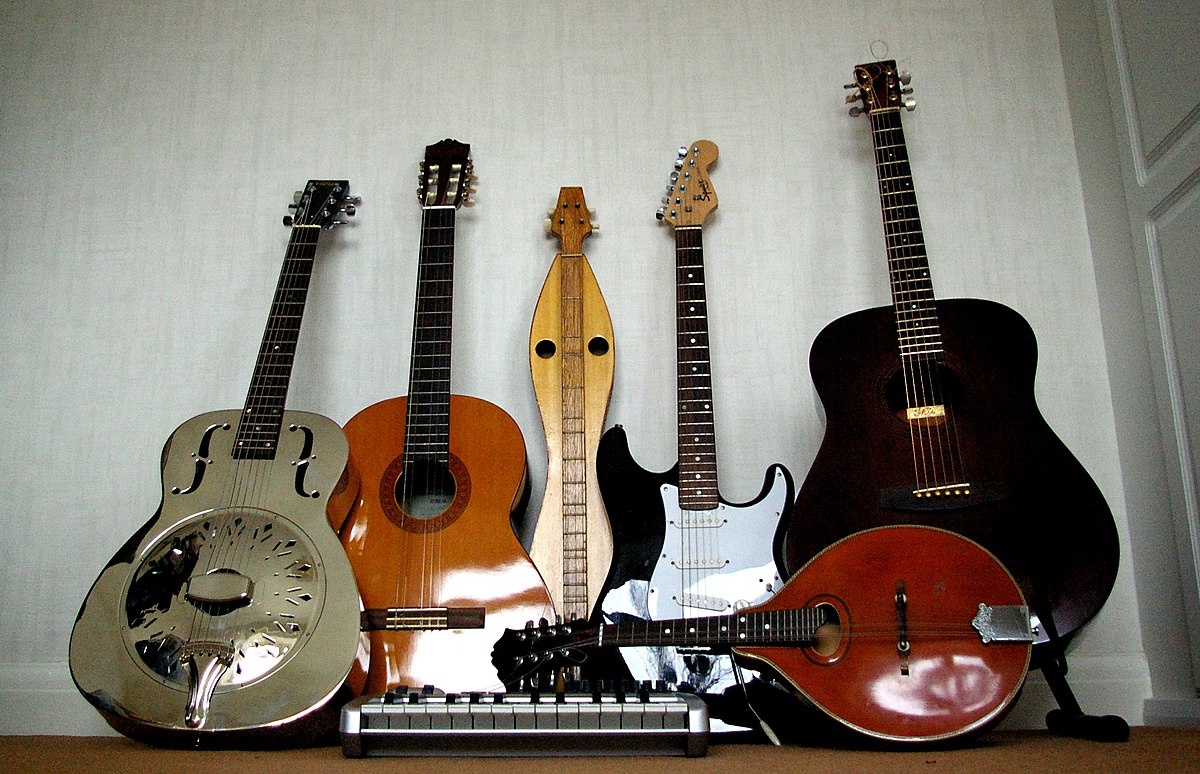

Rock
What Instruments Are Used In Rock Music
Modified: March 9, 2024
Discover the iconic instruments that define rock music, from electric guitars to thunderous drums. Explore the essential gear that creates the electrifying sound of rock.
(Many of the links in this article redirect to a specific reviewed product. Your purchase of these products through affiliate links helps to generate commission for AudioLover.com, at no extra cost. Learn more)
Table of Contents
Introduction
Rock music is a genre that has captured the hearts of millions of people around the world. Its energetic and rebellious spirit has made it a cornerstone of popular music. One of the key elements that define the sound of rock music is the instruments used to create it. From the iconic electric guitar riffs to the pounding beats of the drums, each instrument in rock music serves a vital role in creating the signature sound.
In this article, we will explore the instruments commonly used in rock music and discuss their unique features and contributions to the genre. Whether you’re a seasoned rock enthusiast or just starting to explore this exciting genre, understanding the instruments behind rock music will deepen your appreciation for its timeless sound.
From the electrifying guitar solos to the powerful rhythm section, rock music is characterized by its use of various instruments that work together to create a dynamic and memorable sound. Though rock music has evolved throughout the decades, the core instrumentation has remained consistent, with a few variations and additions along the way.
Grab your air guitar and get ready to dive into the world of rock music instruments as we explore the electric guitars, bass guitars, drum kits, keyboards and synthesizers, vocals, and additional instruments that shape the sound of rock music.
Electric Guitars
When you think of rock music, the electric guitar is likely the first instrument that comes to mind. This iconic instrument is the driving force behind many of the genre’s most memorable riffs and solos.
Electric guitars are designed with a solid body and utilize electromagnetic pickups to convert the vibrations of the strings into electrical signals. They can be played with or without amplification, but the true power and character of an electric guitar are unleashed when connected to an amplifier.
One of the defining features of electric guitars is their ability to produce a wide range of sounds by adjusting the tone and volume controls. From clean and mellow tones to distorted and aggressive sounds, electric guitars offer versatility that allows musicians to tailor their sound to the style of rock music they are playing.
There are several types of electric guitars commonly used in rock music, including the classic Fender Stratocaster and Gibson Les Paul. Each model has its own unique tonal characteristics and playing style, making them favored choices for rock guitarists.
Rock guitarists often make use of various playing techniques such as power chords, palm muting, and guitar solos to create the signature sound of rock music. The electric guitar’s ability to sustain notes and perform intricate bends and vibrato adds a sense of expressiveness and intensity to the music.
Notable rock musicians like Jimi Hendrix, Jimmy Page, and Eddie Van Halen have pushed the boundaries of what can be achieved with an electric guitar, inspiring countless aspiring rock musicians to pick up the instrument.
Whether it’s the driving rhythm or the screeching solos, the electric guitar is the backbone of rock music, providing the power and intensity that define the genre. Its iconic sound is instantly recognizable and has become synonymous with the essence of rock music itself.
Bass Guitars
In the realm of rock music, the bass guitar plays a crucial role in providing the foundation and groove of the music. Often overshadowed by the electric guitar, the bass guitar delivers the low-end frequencies that add depth and power to the overall sound.
Similar in appearance to the electric guitar, the bass guitar has thicker strings and a longer scale length. Its purpose is to provide the rhythmic and harmonic backbone of the music by playing bass lines and supporting the harmony of the song.
The bass guitar is typically played using plucking or fingerpicking techniques, but it can also be played with a pick for a more aggressive tone. The instrument can produce a range of sounds, from a deep, sustained note to a punchy and percussive attack.
Rock bassists often focus on locking in with the drummer to create a tight and solid rhythm section. Together, the bass guitar and drums lay the foundation for the other instruments to build upon. The bass guitar’s role in rock music is not only to provide a solid groove but also to enhance the overall dynamics and intensity of the music.
Many legendary rock bands have had bassists who left an indelible mark on the genre. Figures like John Paul Jones of Led Zeppelin, Flea of Red Hot Chili Peppers, and Geddy Lee of Rush are revered for their technical prowess and innovative playing styles.
From melodic bass lines to driving rhythm, the bass guitar brings a sense of power and depth to rock music. Its presence is felt through the vibrations that rumble through the speakers, adding a necessary element to the overall sonic experience.
While it may not always be in the spotlight, the bass guitar is an essential component of rock music, working in tandem with the other instruments to create a well-rounded and captivating sound. Its ability to provide a solid foundation and add a touch of melody makes it a vital element that should never be overlooked.
Drum Kit
The beating heart of rock music, the drum kit provides the driving force and rhythm that keeps the music moving forward. Comprised of various drums, cymbals, and percussion instruments, the drum kit is a powerhouse of sound and energy.
The drum kit consists of a combination of drums, including the bass drum, snare drum, toms, and floor tom. These drums are complemented by a range of cymbals, such as the hi-hat, ride cymbal, and crash cymbal. Additional percussion instruments like the tambourine or cowbell may also be incorporated into the drum kit to add texture and flavor to the music.
The drummer utilizes different techniques and playing styles to create a diverse range of sounds. The bass drum provides the deep, booming thud, while the snare drum delivers the sharp, cracking sound that punctuates the rhythm. High-pitched toms bring a melodic element, while cymbals add shimmer and impact to the music.
Rock drummers often employ powerful, energetic playing styles, accentuating the dynamics of the music and driving the tempo. The drum kit serves as the backbone, synchronizing with the other instruments and supporting the overall groove of the song.
Renowned rock drummers like John Bonham of Led Zeppelin, Neil Peart of Rush, and Dave Grohl of Foo Fighters have left a lasting impact on the genre through their exceptional drumming skills and innovative techniques.
With their intricate patterns, fills, and explosive solos, the drum kit adds intensity and excitement to rock music. It sets the pace, dictates the energy, and brings the music to life. From the thunderous crashes to the rapid-fire snare rolls, the drum kit is integral to the electrifying experience of rock music.
Whether it’s the driving beat that gets your foot tapping or the thunderous fills that make your heart race, the drum kit is the powerhouse that propels rock music forward. Its relentless energy and primal force make it an essential component of the genre, capturing the hearts and souls of rock enthusiasts worldwide.
Keyboards and Synthesizers
While guitars and drums often take the spotlight in rock music, keyboards and synthesizers add a unique texture and atmospheric element to the genre. These versatile instruments have played a significant role in shaping the sound of rock music across different eras.
Keyboards, such as the piano or electric organ, bring a melodic and harmonic richness to rock music. They can provide lush chords, intricate melodies, and captivating solos. Keyboardists often employ techniques like glissandos, staccatos, and arpeggios to enhance the musicality of their performances.
On the other hand, synthesizers have revolutionized the rock music landscape by introducing electronic sounds and textures. Synthesizers can imitate traditional instruments like pianos and strings, but they also have the ability to create otherworldly sounds and effects that push the boundaries of musical expression.
From the iconic organ riff in Deep Purple’s “Smoke on the Water” to the atmospheric synth pads in Pink Floyd’s “Shine On You Crazy Diamond,” keyboards and synthesizers have left an indelible mark on the genre.
Notable rock bands like The Doors, Yes, and Radiohead integrated keyboards and synthesizers seamlessly into their music, enhancing the sonic landscape and adding depth to their compositions.
Whether it’s providing haunting melodies, epic soundscapes, or subtle textures, keyboards and synthesizers bring a wide array of sonic possibilities to rock music. They can create a sense of grandeur or add an ethereal quality that elevates the emotional impact of the music.
These versatile instruments have the power to transport the listener and evoke powerful emotions. Whether it’s a delicate piano interlude or a soaring synth solo, keyboards and synthesizers add a layer of richness and complexity to the rock music experience.
So, the next time you find yourself lost in the soaring melodies or mesmerized by the ambient sounds, remember to appreciate the artistic contributions of keyboards and synthesizers in shaping the unique sound of rock music.
Vocals
The human voice is perhaps the most powerful and captivating instrument in rock music. The vocals serve as the vehicle for delivering the lyrics and expressing the emotions and stories behind the music.
In rock music, vocalists have the ability to convey a wide range of emotions, from raw and gritty to smooth and melodic. The vocal style can vary greatly depending on the subgenre of rock, with artists showcasing everything from powerful belting to haunting whispers.
Rock vocalists often possess a distinct and recognizable tone that sets them apart. Their voices can cut through the heavy guitars and pounding drums, commanding attention and leaving a lasting impact on listeners.
Rock vocals can be intense and energetic, matching the driving rhythm and intensity of the music. They can also be emotionally charged, conveying deep feelings of angst, rebellion, or passion. From the vulnerable crooning of Chris Cornell to the rebellious screams of Kurt Cobain, rock music offers a rich and diverse landscape of vocal styles.
The lyrics sung by rock vocalists often reflect societal issues, personal struggles, and themes of love, loss, and self-discovery. They serve as a powerful medium for artists to connect with their audience and convey their messages.
Rock bands frequently employ harmonies and backing vocals to create a fuller sound. These harmonies can add depth and complexity to the music, enhancing the emotional impact of the songs.
Notable rock vocalists like Freddie Mercury of Queen, Robert Plant of Led Zeppelin, and Ann Wilson of Heart are celebrated for their exceptional vocal abilities, captivating stage presence, and ability to resonate with audiences.
From the catchy hooks and anthemic choruses to the soulful ballads and explosive vocal performances, the vocals in rock music play an integral role in capturing the hearts and minds of fans. They bring the lyrics to life, making the listener feel connected and immersed in the music.
So, whether you find yourself belting out the lyrics at a concert or singing along passionately in your car, never underestimate the power and impact of the vocals in rock music.
Additional Instruments
While the electric guitar, bass guitar, drums, keyboards, and vocals form the core of rock music, there are also a variety of additional instruments that can be incorporated to add depth and flavor to the sound.
One popular addition to rock music is the use of brass instruments, such as trumpets, saxophones, and trombones. These instruments bring a vibrant and soulful quality to the music, often used in rock genres like ska, funk, and soul-infused rock. Bands like Bruce Springsteen’s E Street Band and Chicago have utilized brass sections to enhance their energetic and dynamic sound.
Strings instruments like violins, cellos, and violas can also be found in rock music, adding a touch of elegance and sophistication. These instruments can bring a melodic, emotional, or even aggressive element to the music, expanding the sonic palette. Bands like Electric Light Orchestra and The Smashing Pumpkins are known for their use of string arrangements in their rock compositions.
Percussion instruments, beyond the standard drum kit, can also be utilized to create unique rhythmic textures. Instruments such as tambourines, shakers, maracas, and even unusual items like trash cans or barrels can be used to add percussive elements and enhance the groove of the music.
In some cases, unconventional instruments or objects are used to create distinctive sounds. For example, bands like Aerosmith and Led Zeppelin have incorporated the harmonica into their rock songs, adding a bluesy and gritty element. Similarly, the use of handclaps, stomping, or even the sound of breaking glass can be employed to create memorable and unconventional percussion effects.
Additional instruments in rock music are not limited to acoustic or traditional instruments. With the advent of technology and digital music production, electronic instruments and effects have become prominent in rock music. Drum machines, samplers, and synthesizers offer limitless possibilities for creating unique sounds and textures.
Rock bands are constantly pushing boundaries and experimenting with new instruments or sounds to create their distinctive style. Whether it’s utilizing horns for a bold brass section or incorporating unique percussion elements, these additional instruments contribute to the richness and diversity of rock music.
By expanding the sonic palette beyond the typical rock instrumentation, artists are able to create a truly immersive and captivating experience for the listener.
Conclusion
Rock music is a genre that is fueled by passion, energy, and innovation, and the instruments used in rock play a crucial role in defining its sound. From the iconic electric guitar riffs to the thunderous drums and captivating vocals, each instrument contributes to the unique character and impact of rock music.
The electric guitar stands as the symbol of rock, with its electrifying tones and expressive capabilities. The bass guitar adds depth and groove, anchoring the rhythm section, while the drum kit drives the music forward with its powerful beats and fills. Keyboards and synthesizers provide melodic and atmospheric elements, while vocals deliver the emotional and storytelling aspects of the music.
Additional instruments, such as brass, strings, and unconventional percussion, have the power to add new flavors and dimensions to rock music, expanding its sonic diversity. Whether it’s the rich harmonies of brass instruments, the elegance of string arrangements, or the experimental use of unique percussive elements, these additions contribute to the richness and versatility of the genre.
Throughout the history of rock, legendary musicians have pushed the boundaries of what can be achieved with these instruments, creating timeless songs and performances that have left a lasting impact on generations of music lovers.
While each instrument has its unique role, it is the combination and synergy of these instruments in rock music that creates the powerful and captivating sound that we all know and love. The instruments work together, complementing and reinforcing one another, to bring the music to life and evoke powerful emotions within the listener.
As you immerse yourself in the world of rock music, take a moment to appreciate the incredible craftsmanship and artistry behind each instrument. Whether you’re listening to a blistering guitar solo, feeling the groove of the bass and drums, or being moved by the vocal performance, remember that it is the collective power of these instruments that creates the timeless magic of rock music.
So, turn up the volume, embrace the energy, and let the instruments of rock transport you to a world filled with passion, rebellion, and unbridled creativity.

